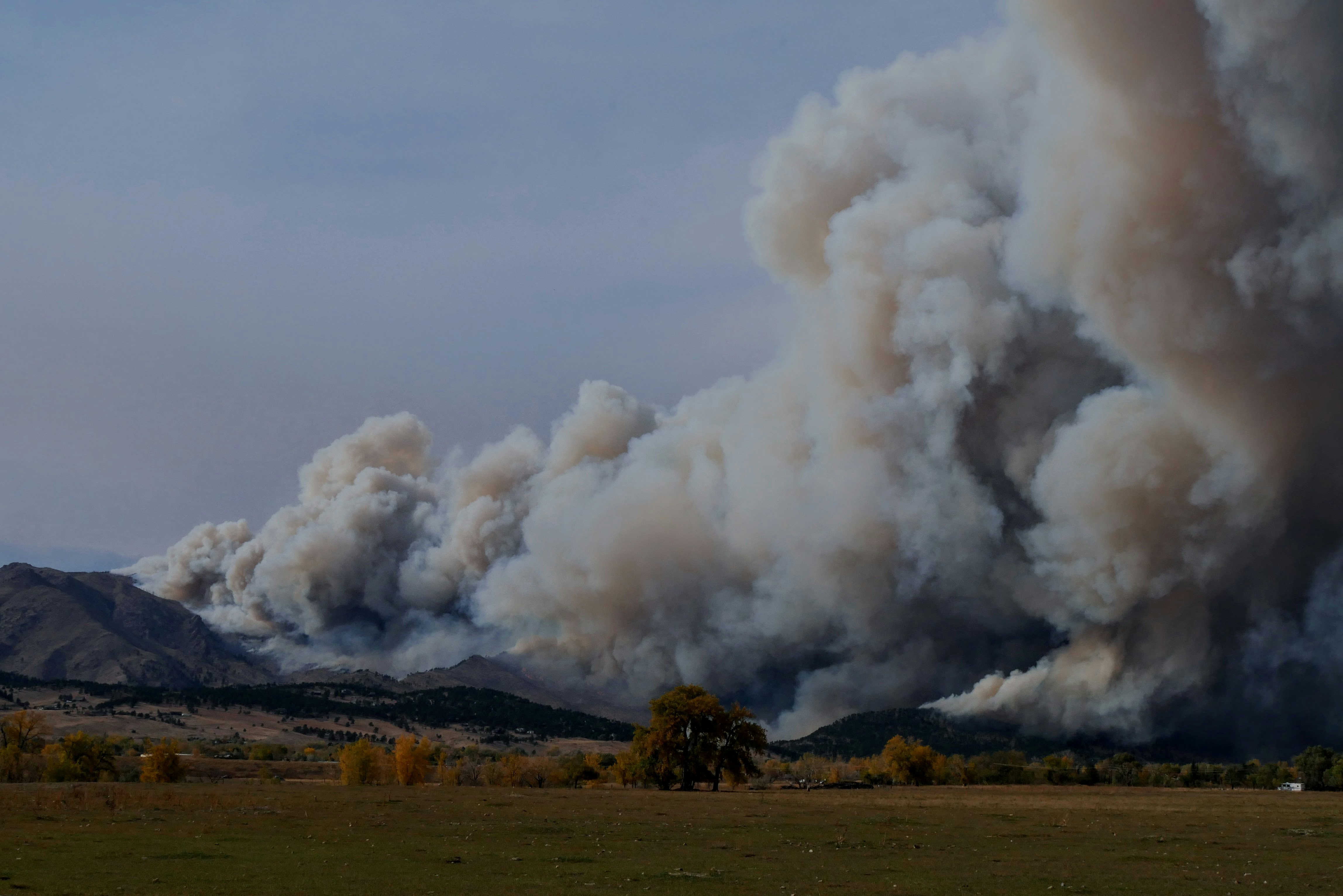Ten Secrets to Win Your Hail Damage Claim from a Leading Lawyer
Post date :
January 25, 2024

Founder, Western Slope Law
That softball-sized hail just pummeled your property, and within hours, your insurance company has already assigned an adjuster, calculated their target payout, and prepared their standard denial scripts. They're counting on you making predictable mistakes that save them thousands.
Here in Glenwood Springs, where severe hailstorms strike multiple times each season, we see the same pattern repeatedly: homeowners who document poorly, accept lowball offers, and miss critical deadlines end up funding their own repairs. According to 2023 NOAA data, Colorado experienced over $2 billion in hail damage last year alone, with the average claim settlement falling 40% below actual repair costs.
The difference between full compensation and frustrating underpayment isn't luck—it's strategy.
Your insurance policy is a contract, not a suggestion. When you understand exactly what it requires from both parties and how Colorado law strengthens your position, you transform from an easy target into a prepared opponent the insurance company must take seriously.
1. The Damage You Can't See Is Worth More Than What You Can
Those obvious dents on your roof are just the entry point to a much larger claim. Hail damage creates a cascade effect that insurance adjusters are trained to minimize or ignore entirely. Your shingles might only show surface bruising today, but underneath, the protective mat has fractured. Within months, UV radiation and freeze-thaw cycles will turn those "cosmetic" marks into active leaks.
Metal components tell an even more expensive story. Your AC condenser fins might still function, but even minor fin damage reduces efficiency by 15-20% according to manufacturer specifications. That efficiency loss translates to hundreds in increased energy costs annually—all compensable under your policy. The protective coating on metal roofs, once compromised by hail impacts, begins an irreversible oxidation process that won't show visible rust for 6-12 months.
For vehicles, advanced driver assistance systems (ADAS) have changed everything. That minor hood dent might seem purely cosmetic, but if it affects sensor alignment for your collision avoidance system, you're looking at thousands in recalibration costs that adjusters routinely "forget" to include.
2. Your First 72 Hours Determine the Next 72 Days
Colorado weather doesn't wait for your insurance claim. Those white spatter marks on your siding, the granules in your gutters, the pattern of strikes across different roof slopes—this evidence disappears with the next rain. Smart documentation in the first three days often means the difference between full replacement and a "cosmetic damage" denial.
Creating Your Evidence Foundation
Start with systematic photography using consistent methodology. Shoot each elevation of your home at the same time of day for uniform lighting. Place a coin next to every impact for scale. Document soft metals including downspouts, window wraps, garage doors, and AC units—these often show damage patterns that prove hail size when roof damage seems ambiguous.
Create your digital evidence vault immediately. Build folders labeled "Roof," "Siding," "Vehicles," "Interior," and "Other Structures." Name every file with dates and specific locations. When the adjuster arrives in a week, you'll have organized evidence that tells your story more convincingly than any verbal argument.
3. What You Say to the Insurance Company Becomes Evidence Against You
That first phone call is being recorded, analyzed, and documented. Insurance representatives follow scripts designed to limit claim scope. They'll ask seemingly innocent questions like "Is this all the damage you've noticed?" or "Would you describe it as minor?" Your answers become part of the permanent claim record.
Use this exact script instead: "I'm reporting property damage from the hailstorm on [date] in Glenwood Springs. I'm conducting a thorough assessment and will provide comprehensive documentation. Please provide my claim number and written confirmation of this notice." Then stop talking.
Never agree when they suggest the damage "looks mostly cosmetic" or offer to "handle this quickly over the phone." Follow every conversation with an email summarizing what was discussed. Colorado law requires insurers to acknowledge claims within 10 working days and provide determinations within 30 days—mark these deadlines immediately.
4. Your Adjuster Works for Them, Not You
Insurance adjusters seem helpful, even sympathetic. They'll express concern about your damage, promise fair treatment, and assure you they'll "take care of everything." Remember: their performance reviews and bonuses depend on keeping claim payments low, not on your satisfaction.
Understanding the Inspection Game
Most adjusters spend 15-20 minutes on a roof inspection. They'll check one or two accessible areas, count a sample square, and extrapolate damage across your entire roof. They won't check multiple slopes for directional damage patterns. They'll ignore code requirements for ice and water barriers. They'll overlook the matching requirements when partial replacement would leave mismatched materials.
This is why independent inspections change everything. A qualified roofing inspector spends 2-3 hours documenting damage comprehensively. They identify code requirements specific to Garfield County. They document manufacturer specifications that void warranties with partial repairs. They create evidence that makes lowball estimates legally risky for insurance companies.
5. Building a Claim File That Forces Payment
Winning claims aren't argued—they're documented. Your file should make denying full payment so risky that the insurance company's own lawyers advise settling. This means going beyond basic photos to create an evidence package that anticipates and defeats common denial tactics.
Pull weather data from NOAA showing exact hail size, wind speeds, and storm duration at your address. Include manufacturer specifications showing impact ratings for your specific roofing materials. Document local building codes requiring full replacement when repairs would leave non-matching sections. Obtain multiple estimates from licensed contractors using Xactimate—the same software insurance companies use.
Create a damage timeline showing how immediate impacts will worsen without proper repair. When referencing codes, include specific statute numbers. When citing warranties, attach relevant pages. Organize everything chronologically with a master spreadsheet tracking every communication, deadline, and outcome.
6. The Supplement Game Nobody Explains
Your initial settlement rarely covers actual repairs. Colorado construction costs, especially in mountain communities, run 20-30% higher than insurance software estimates. This gap isn't accidental—it's designed to frustrate you into accepting less. Understanding the supplement process transforms it from a barrier into a tool.
Mastering the Supplement Process
Document every discovery immediately. When your contractor removes damaged shingles and finds rotted decking, photograph it before any covering. Submit supplements within 24 hours with detailed explanations referencing your policy's "hidden damage" provisions. Track every submission with delivery confirmation.
The key is never letting contractors handle supplements alone. Review every submission. Ensure nothing gets dropped. Remember that recoverable depreciation—often thousands of dollars—only gets released after you prove completion with invoices and photos. Many homeowners leave this money on the table simply because they don't know to ask.
7. Red Flags That Demand Legal Intervention
Certain insurance company behaviors signal you're heading toward bad faith denial. Recognizing these patterns early saves months of frustration and thousands in losses.
Immediate red flags requiring a hail damage lawyer: The adjuster refuses to inspect certain areas claiming they're "inaccessible." You receive a "reservation of rights" letter questioning coverage. The estimate excludes damage clearly visible in your documentation. Multiple supplements get denied without specific explanation. Communication stops or responses exceed 30 days.
Colorado's bad faith statutes (C.R.S. 10-3-1115 and 10-3-1116) provide double damages plus attorney fees when insurers unreasonably delay or deny valid claims. Insurance companies know these laws well. Often, a single letter from an attorney citing specific violations completely changes their approach. Recent Colorado court decisions have strengthened these protections, with insurers facing increasing penalties for systematic underpayment patterns.
8. Negotiation Leverage That Actually Works
Insurance companies respond to legal risk, not emotional appeals. Every insurance policy includes deadlines, appraisal clauses, and specific requirements that become powerful leverage when used strategically.
Strategic Escalation Framework
Frame your position around quantifiable impacts: efficiency losses in damaged equipment, shortened material lifespan based on manufacturer data, and code compliance requirements. Present everything in writing with specific policy references and deadlines: "Per policy section 4.2, we request response within 15 days."
When initial negotiations stall, escalate systematically: Request reinspection with a field manager. Demand written explanations for denials citing specific policy language. Invoke the appraisal clause for valuation disputes. File formal complaints with the Colorado Division of Insurance. Each escalation should reference previous attempts and specific violations.
9. Why Local Legal Experience Matters in Glenwood Springs
Mountain hail damage differs from Front Range damage. Storms funnel through valleys creating directional patterns. Freeze-thaw cycles accelerate deterioration. Local contractors charge premium rates that insurance software doesn't reflect. These regional factors significantly impact claim values.
Western Slope Law has handled hundreds of hail claims specific to this region. We know which adjusters consistently lowball, which engineers never actually get on roofs, and which insurance companies systematically deny supplements. This experience translates into faster resolutions and higher settlements.
We structure your claim to prevent denials, not react to them. When adjusters claim damage is "cosmetic," we've already prepared manufacturer documentation proving functional impact. When they exclude code upgrades, we've compiled building department requirements. Most importantly, we understand you can't wait months while damage worsens.
10. Your Next 48 Hours Determine Your Next 6 Months
Success starts with immediate strategic action. While you're reading this, your insurance company is already building their file. You need to build yours faster and better. Today, photograph everything systematically. Call your insurer using the script provided. Create your digital evidence folders. Tomorrow, schedule independent inspections. Pull weather data and building codes. Start your communication log. This Week, compile estimates, review your policy carefully, and identify any red flags requiring legal help.
The difference between homeowners who get paid fairly and those who don't isn't luck—it's preparation and expertise. Whether you handle the claim yourself or engage a hail damage lawyer, the path remains the same: comprehensive documentation, strategic presentation, and unwavering insistence on full contractual compliance.
Western Slope Law can evaluate your situation and identify the fastest path to fair compensation. We'll review your documentation, spot gaps in the insurance company's position, and explain exactly which legal tools apply to your situation. In Glenwood Springs and throughout Colorado's Western Slope, we've transformed systematic underpayments into full compensation by knowing exactly which legal requirements insurance companies hope you'll never discover.


















